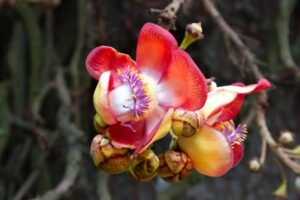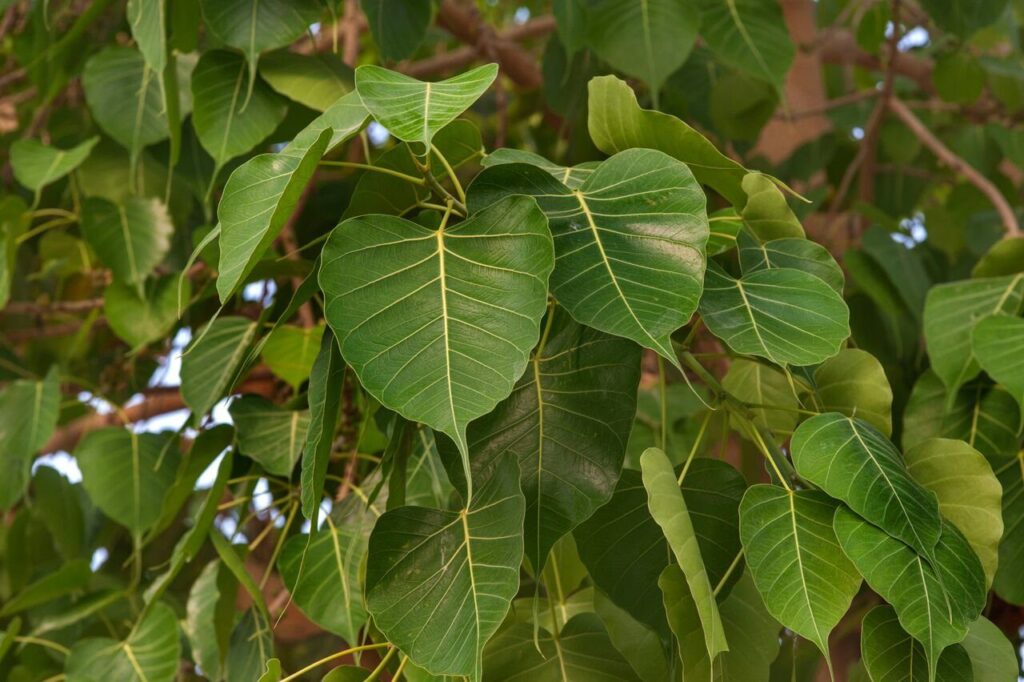Herb
Asvattha (Ficus religiosa) Herb Ayurvedic Overview
Asvattha (Ficus religiosa) is an evergreen or deciduous tree consisting of Ficus religiosa Linn’s dried bark (Fam. Moraceae). It is a large perennial tree, glabrous when young, found throughout the plains of India up to 170 m altitudes in the Himalayas. Primarily planted as an avenue and roadside tree, especially near temples. Asvattha (Ficus religiosa) plant has a very long lifespan, ranging on average between 1000 and 1,500. It is also regarded as the ‘’Oldest Historical Tree’’ in the world with religious importance.
Pipala trees are native to the Indian subcontinent and thrive in hot and humid weather. Asvattha can grow in most soil types and prefer full sunlight. It is harvested from the wild for local use as food, medicine, and a source of materials. The plant is cultivated in the tropical regions of the world, mainly as an ornamental trees with different benefits.
Asvattha (Ficus religiosa) is used to manage various infections, heals wounds, improve fertility and treat poisoning. The bark is astringent, and fruits act as a laxative. The seeds are cooling, refrigerant, and laxative.
Table of Contents
Scientific Classification of Asvattha (Ficus religiosa):
- Domain: Eukaryota
- Kingdom: Plantae
- Subkingdom: Viridaeplantae
- Phylum: Tracheophyta
- Subphylum: Euphyllophytina
- Infraphylum: Radiatopses
- Class: Magnoliopsida
- Subclass: Dilleniidae
- Superorder: Urticanae
- Order: Urticales
- Family: Moraceae
- Tribe: Ficeae
- Genus: Ficus
- Specific epithet: Religiosa Linnaeus
- Botanical name: Ficus religiosa
Asvattha (Ficus religiosa) Synonyms:
- Sanskrit: Pippala
- Assamese: Ahant
- Bengali: Asvattha, Ashud, Ashvattha
- English: Pipal tree
- Gujrati: Piplo, Jari, Piparo, Pipalo
- Hindi: Pipala, Pipal
- Kannada: Arlo, Ranji, Basri, Ashvatthanara, Ashwatha, Aralimara, Aralegida, Ashvathamara, Basari, Ashvattha
- Kashmiri: Bad
- Malayalam: Arayal
- Marathi: Pipal, Pimpal, Pippal
- Oriya: Aswatha
- Punjabi: Pipal, Pippal
- Tamil: Ashwarthan, Arasamaram, Arasan, Arasu, Arara
- Telugu: Ravichettz
Asvattha (Ficus religiosa) Description:
 a) Macroscopic: The bark of Asvattha (Ficus religiosa) occurs in slightly curved pieces, varying from 1.0-2.5 cm or more in thickness. Its outer surface is brown, and the inner surface is smooth and somewhat brownish, fracture, fibrous, taste, astringent.
a) Macroscopic: The bark of Asvattha (Ficus religiosa) occurs in slightly curved pieces, varying from 1.0-2.5 cm or more in thickness. Its outer surface is brown, and the inner surface is smooth and somewhat brownish, fracture, fibrous, taste, astringent.
b) Microscopic: The transverse section of Asvattha (Ficus religiosa) bark shows thick-walled cork cells, compressed rectangular to cubical, and dead elements of the secondary cortex, consisting of cork cambium distinct with 3-4 rows of the newly formed secondary cortex. It is mainly composed of stone cells towards the periphery. Most of the secondary cortex’s parenchymatous cells contain starch grains and few prismatic calcium oxalate crystals.
A broad zone of secondary phloem consisting of sieve elements, phloem fibers are arranged in singles or groups of 2 or more non-lignified, numerous crystal fibers. In the outer region, sieve elements are mostly collapsed 21 while in the inner part, it is intact. The phloem parenchyma is mostly thick-walled; stone cells are present in single or small groups similar to those in the secondary cortex. In phloem parenchyma, several ray cells are filled with brown pigments, prismatic crystals of calcium oxalate, and starch grains.
Identity, Purity, and Strength of Asvattha (Ficus religiosa):
- Foreign matter Not more than 2 percent, Appendix 2.2.2
- Total Ash Not more than 7 percent, Appendix 2.2.3
- Acid-insoluble ash Not more than 0.3 percent, Appendix 2.2.4
- Alcohol-soluble extractive Not less than 8 percent, Appendix 2.2.6
- Water-soluble extractive Not less than 9 percent, Appendix 2.2.7
Chemical Constituents of Asvattha (Ficus religiosa):
The main component of Asvattha (Ficus religiosa) is Tannins. Other than this, it is composed of henols, alkaloids, and flavonoids, β-sitosteryl-D-glucoside, vitamin K, n-octacosanol, methyl oleanolate, lanosterol, stigmasterol, lupen-3-one.
Ayurvedic Properties and Action of Asvattha (Ficus religiosa):
- Rasa: Kashaya
- Guna: Guru, Ruksha
- Virya: Shita
- Vipaka: Katu
- Karma: Varnya, Kaphapittavinashi, Sangrahi, Bhagansandhankara, Mutrasangrahani, Yonishodhan.
Ayurvedic Formulations made by Asvattha (Ficus religiosa):
The most important Ayurvedic Nyagrodhadi Churna, Nyagrodhadi Kwath Churna, Nalpamaradi Tailam, Arimedadi Tailam, Sarivadyasava, Panchvalkaladi Tailam.
Therapeutic Uses of Asvattha (Ficus religiosa):
Prameha, Raktapitta, Vrana, Vatarakta, Yonidosha, Chardi, Aruchi, Daha,
Dose of Asvattha (Ficus religiosa):
- 5 -100 ml of decoction.
- 3 – 5 gm of powder.
Reference:
Ayurvedic Pharmacopeia of India.


